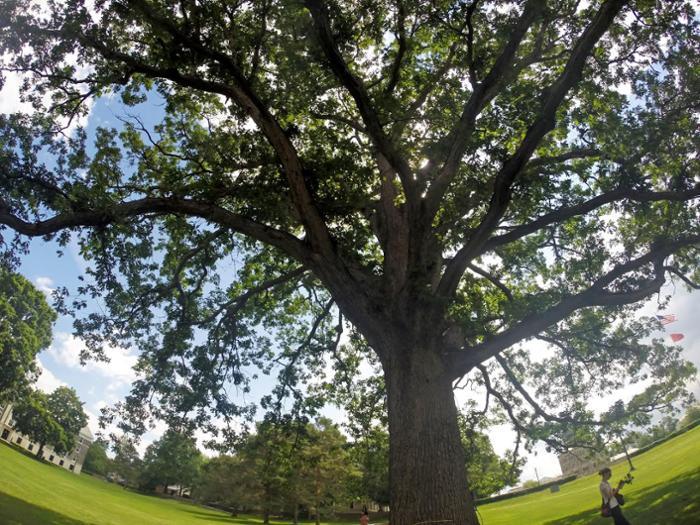In May 1854, a passionate, hot-tempered student named Julius Sterling Morton was expelled from the University of Michigan. Weeks away from graduating, Morton was booted for, among other things, “inattention to all his college duties, long continued neglect of recitation, and for his manifest contempt of the authorities of the University.”
The last charge, apparently, stemmed from his speech at a meeting called to protest the university’s dismissal of a popular professor.
Morton’s expulsion opened the door for the Adams, N.Y. native, to forever be tagged with a connection to Union. That same year, despite never attending classes here, a proposal was made to grant Morton an honorary bachelor of arts degree from the College. Trustees ultimately approved the proposal in 1856.
Morton’s connection to Union, though slight, has proved invaluable each April. A former newspaper editor, author and conservationist who served as secretary of agriculture under President Grover Cleveland, Morton is known as the father of Arbor Day.
An avid outdoorsman, Morton had a lifelong passion for trees. When he moved to a “naked prairie” in Nebraska, he and his wife planted various species of trees. To encourage others to care for and plant trees, he lobbied for a state Arbor Day. First celebrated in Nebraska in 1872, it has since spread nationally, held on different dates depending on the state’s growing season.
To mark the holiday Friday morning, members of U-Sustain gathered on a patch of grass across from Grant Hall. There, students planted a Green Mountain sugar maple provided by Facilities. A plaque noting Morton’s role and tie to Union will be added later.
“Union's campus is beautifully landscaped and cared for, and with so many trees around, it's sometimes easy to forget how important they are,” said Stephanie Dick ’16, the organizer of the event. “Trees provide beauty, food, habitats and ecological stability where they grow, and they are extremely important in the role of biodiversity and preserving environments around the world.”
Union’s meticulously maintained landscape includes a vast array of historic and rare tree species. There are about 1,300 major shade trees, 650 flowering shrubs, and 5,000 shrubs and smaller trees. Old and rare species include the gingko, dawn redwood and black walnut.
Dick admits that even though Morton is a nominal alumnus, “any excuse to celebrate such an important part of the environment (trees) is a good one.”
Friday’s ceremony was not the first at Union to honor Morton. In 1932, the College marked Arbor Day by planting 12 Japanese walnut and butternut trees in Jackson’s Garden, and members of Student Council planted a row of elms on the Lenox Road boundary of the campus, which was to be known as the J. Sterling Morton Row.
So how did Morton’s academic pedigree branch out to Union?
The historical record is sketchy, but when Morton was strenuously challenging the administration at Michigan, its president was Henry P. Tappan, Union Class of 1825. As a student, Tappan was a favorite of President Eliphalet Nott.
Nott, who had earned his own undergraduate degree from Brown by passing an exam rather than by attending classes, later awarded Union degrees to the first graduates of Amherst because that institution was not yet authorized to grant degrees. He sometimes also used honorary degrees in irregular ways, according to Wayne Somers ’61, editor of the Encyclopedia of Union College History.
Writing in his diary in 1857, Professor Jonathan Pearson remarked on the College's “notorious extravagance" in having "flung around its honors without stint or discrimination for many years.”
In his 1942 biography of Morton, James C. Olson writes:
“Just how Morton happened to receive the degree is not completely clear. It has been suggested that Dr. Tappan might have asked President Nott or a Union trustee to grant the degree, because he felt that the University of Michigan had not been quite fair to Morton.”
Olson said this seems more probable because in September 1858, faculty at Michigan adopted a remission of expulsion and granted Morton the usual diploma.
Regardless of Morton’s academic honors, his role in creating Arbor Day is firmly planted in history.
He once said:
“The memories that live and bloom in trees, that whisper of the loved and lost in summer leaves, are as imperishable as the seasons of the year – immortal as the love of a mother.”
To learn more about the history of Arbor Day, click here.
